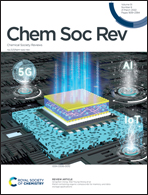Electronic control over site-selectivity in hydrogen atom transfer (HAT) based C(sp3)–H functionalization promoted by electrophilic reagents
Abstract
The direct functionalization of C(sp3)–H bonds represents one of the most investigated approaches to develop new synthetic methodology. Among the available strategies for intermolecular C–H bond functionalization, increasing attention has been devoted to hydrogen atom transfer (HAT) based procedures promoted by radical or radical-like reagents, that offer the opportunity to introduce a large variety of atoms and groups in place of hydrogen under mild conditions. Because of the large number of aliphatic C–H bonds displayed by organic molecules, in these processes control over site-selectivity represents a crucial issue, and the associated factors have been discussed. In this review article, attention will be devoted to the role of electronic effects on C(sp3)–H bond functionalization site-selectivity. Through an analysis of the recent literature, a detailed description of the HAT reagents employed in these processes, the associated mechanistic features and the selectivity patterns observed in the functionalization of substrates of increasing structural complexity will be provided.



 Please wait while we load your content...
Please wait while we load your content...